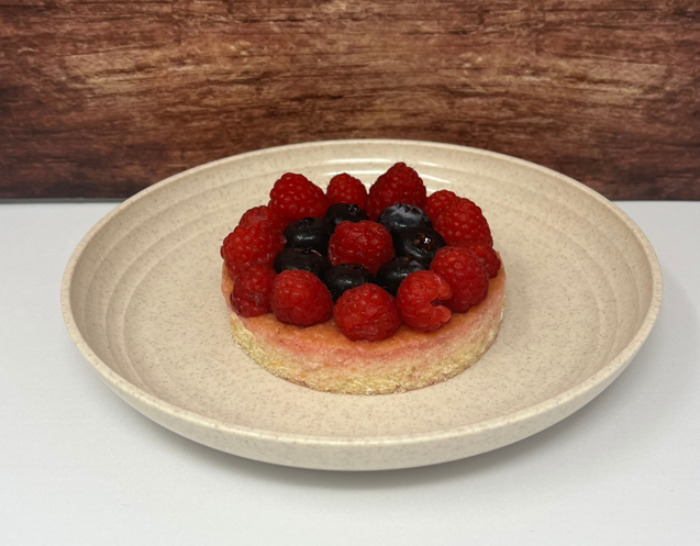This fat-free sponge cake is a great, healthier alternative to shop bought cakes which often contain fat, in the form of butter or oil, and is super simple to make with only 3 main cupboard ingredients.
Skills Check
Follow a recipe; follow food safety & hygiene rules; tidy away; use a sieve; crack an egg; whisk an egg; scrape out a bowl with a spatula; use measuring spoons; use weighing scales; cut using bridge/claw technique safely.
Allergens
Wheat | Gluten | Eggs
*(Please note the allergens listed are indicative only. Allergens vary depending on brand; check the labels on the products you use)
Equipment
Flan tin (8 inch circle) or foil tray, weighing scales, mixing bowl, measuring spoons, electric hand whisk, small bowl, sieve, metal spoon, knife, fork, chopping board, spatula, cooling rack, oven gloves, greaseproof paper, jug, round bladed table knife, chopping board.
Ingredients (one large cake, serves 8):
- 50g caster sugar
- 2 eggs
- 50g plain flour
- 1/4 tsp vanilla essence
- 1 packet sugar free jelly
- Fruit for decoration
Method
- Preheat the oven to 180°C or Gas Mark 4.
- Grease the tin or foil tray.
- Sieve the flour and set aside
- Beat the eggs and caster sugar together with an electric or hand whisk, until the mixture is very thick and pale in colour. (This will take approximately 10-15 minutes by hand).
- Carefully fold in the sieved flour and vanilla extract with a large spoon. Try not to overmix the mixture which will release the air bubbles.
- Pour the mixture into the greased tin and bake for 20-25 minutes until the sponge is golden and comes away from the sides of the tin.
- While the sponge is baking, prepare the jelly by dissolving it in a jug with 284ml (1/2 pint) of boiling water and stir.
- Set in the fridge until the jelly is almost set but still pourable.
- Prepare the fruit by using the bridge and claw techniques safely.
- Arrange the fruit on top of the sponge and pour over the almost set jelly and place in the fridge until serving.
So thinking about fat free fruit cake...

Eggs are an excellent source of protein, vitamins and minerals. Protein is essential for building and repairing our bodies.
Berries are high in fibre and are packed with lots of different substances called phytochemicals. Phytochemicals can help protect our bodies against disease.
Nutritional Information
| - | Energy | 311KJ/ 74kcal | 4% |
| Med | Fat | 1.5g | 2% |
| Low | Saturates | 0.4g | 2% |
| Med | Sugars | 7.4g | 8% |
| Low | Salt | 0.06g | 1% |
per 41g serving
% of an adult's reference intake
Typical values per 100g: Energy 754kJ / 179kcal
Notes
A traffic light system is used on nutrition labels to make it easier to see which foods and drinks are lower in calories, fat, sugar and salt. Try and choose more ‘greens’ and ‘ambers’ and fewer ‘reds’, and stick to smaller portions of ‘reds’.
Just because a recipe or a food has a red traffic light doesn’t mean you shouldn’t eat it. Understanding why a food or recipe might have a red light can be helpful. For example oily fish is high in total fat and so any recipe containing oily fish is likely to be ‘red’ for fat. But it is recommended that we eat oily fish at least once a week because the type of fat it contains is beneficial for our health.
% Reference Intakes are also shown. Reference Intakes are guidelines about the approximate amount of particular nutrients and energy required for a healthy diet (based on an average-sized woman doing an average amount of physical activity). Most children will require less than these Reference Intakes. The contribution of one serving of a food or drink to the Reference Intake for each nutrient is expressed as a percentage.




